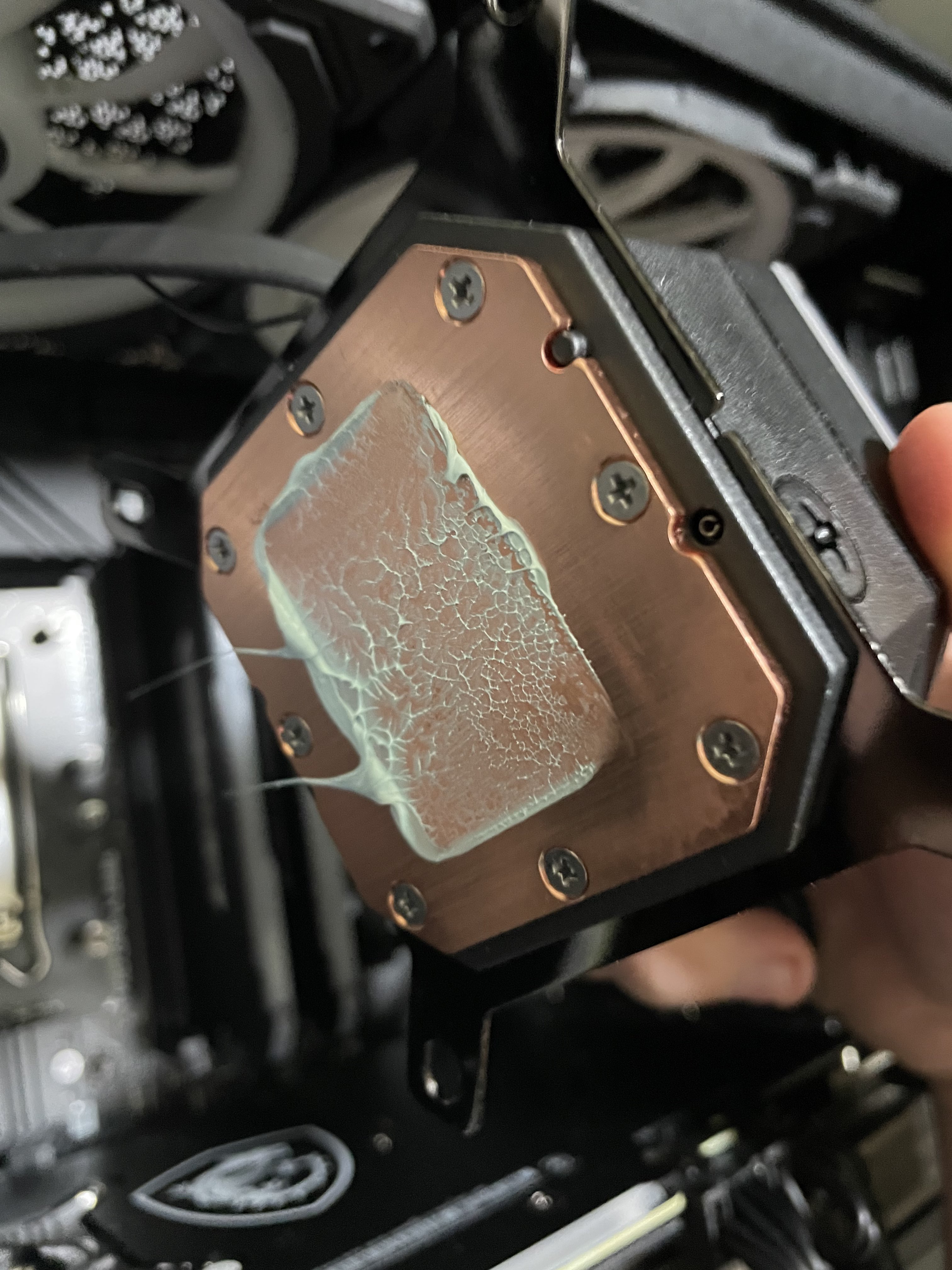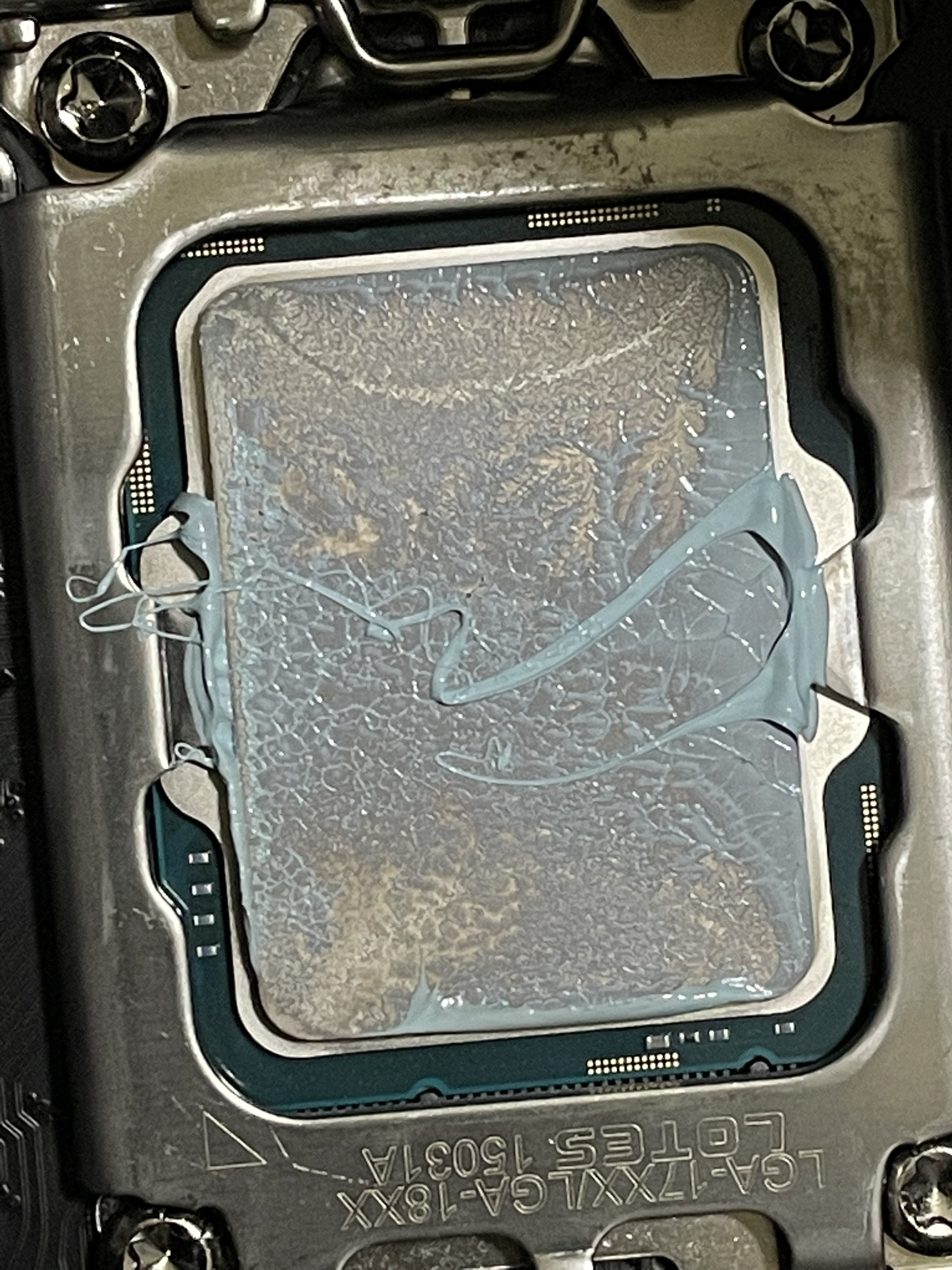Hello,
When testing my build in Cinebench I am getting near 100°C temps. My idle temps are 30-40°C.
View: https://youtu.be/59ZVXjOKMuk
Here is video of me using Cinebench with pump and fans using 'Extreme' settings:
View: https://www.youtube.com/watch?v=UHYJXXUOYfg
Images of my thermal paste spread:


When testing my build in Cinebench I am getting near 100°C temps. My idle temps are 30-40°C.
- I am using i9 12900k and Corsair Elite Capelix 360mm AIO.
- I am using right standoffs - LGA 1700 Retrofit kit and I did mount it correctly.
- I tried reapplying paste (Arctic MX-5) and remounting AIO like 4 times already. Every time the paste spread out evenly (as far as I know, I will attach pictures) and I think that AIO had nice contact with CPU.
- I did not boost/OC my CPU, it is using default specs.
- I am using 4000D Airflow case with this fan setup: 3 intake fans on the front with radiator, 2 exhaust fans on top and 1 exhaust fan at the back.
- All my fans are 120mm Corsair fans.
- I tried running my pump and fans speeds at 'Extreme' and 'Balance' settings in iCUE. When running 'Extreme' my temps stay at around 91°C, but when running 'Balance' settings it goes near 100°C.
- Power plan on Windows is Balanced and I am using Windows 11 OS.
Here is video of me using Cinebench with pump and fans using 'Extreme' settings:
Images of my thermal paste spread:


Last edited:

